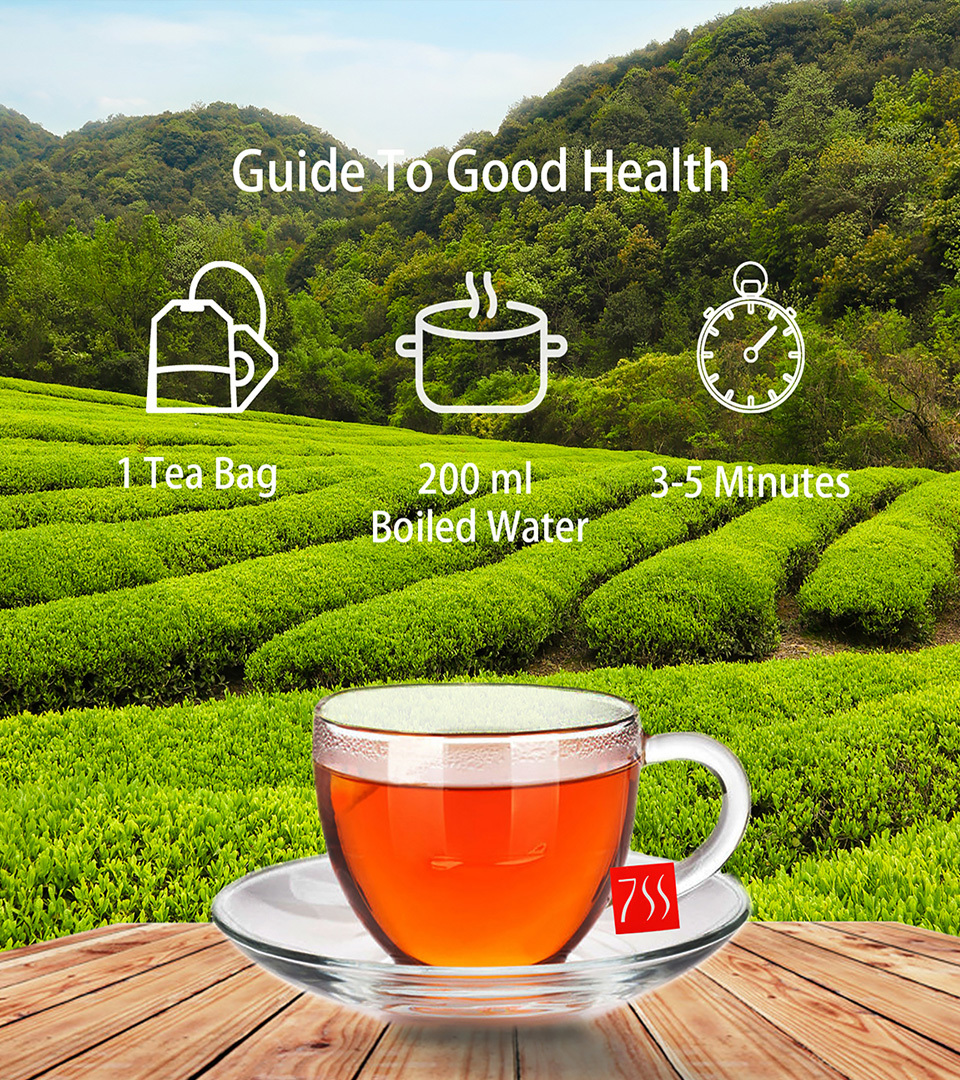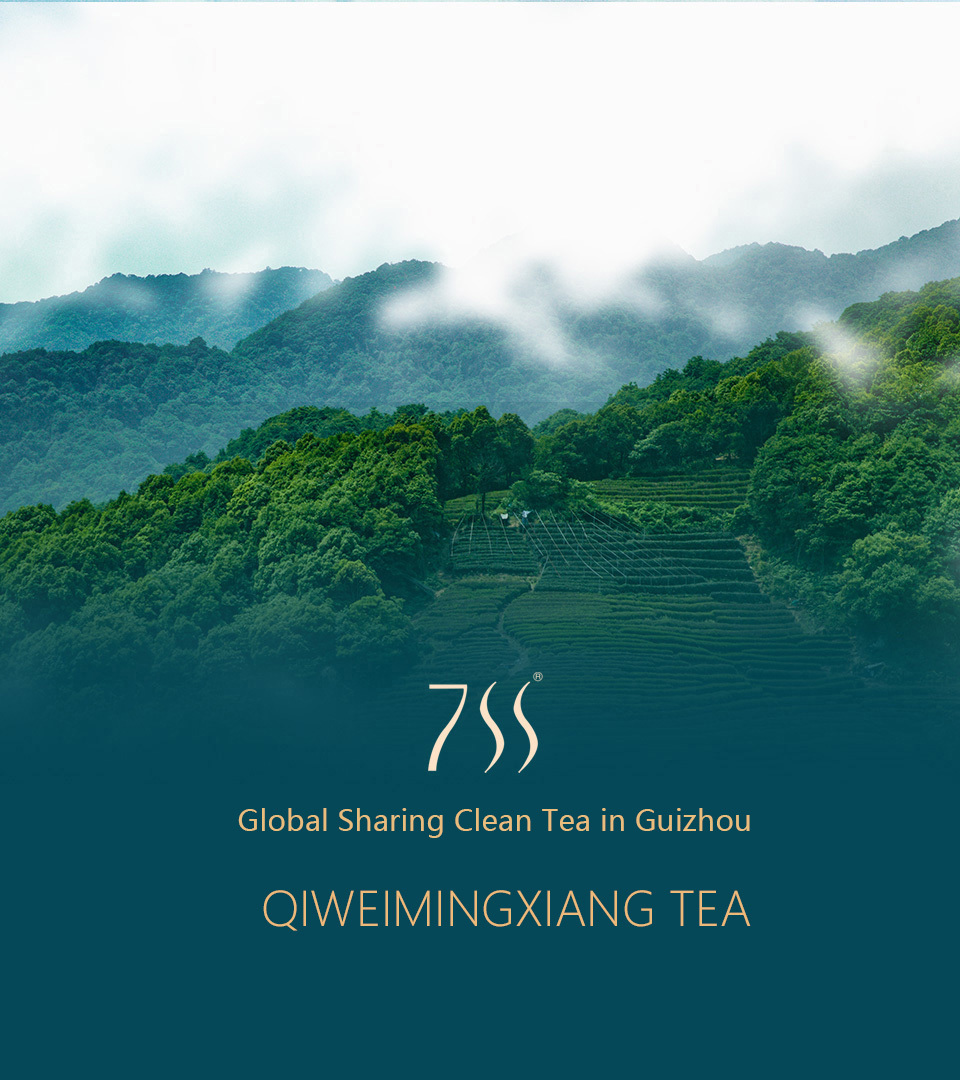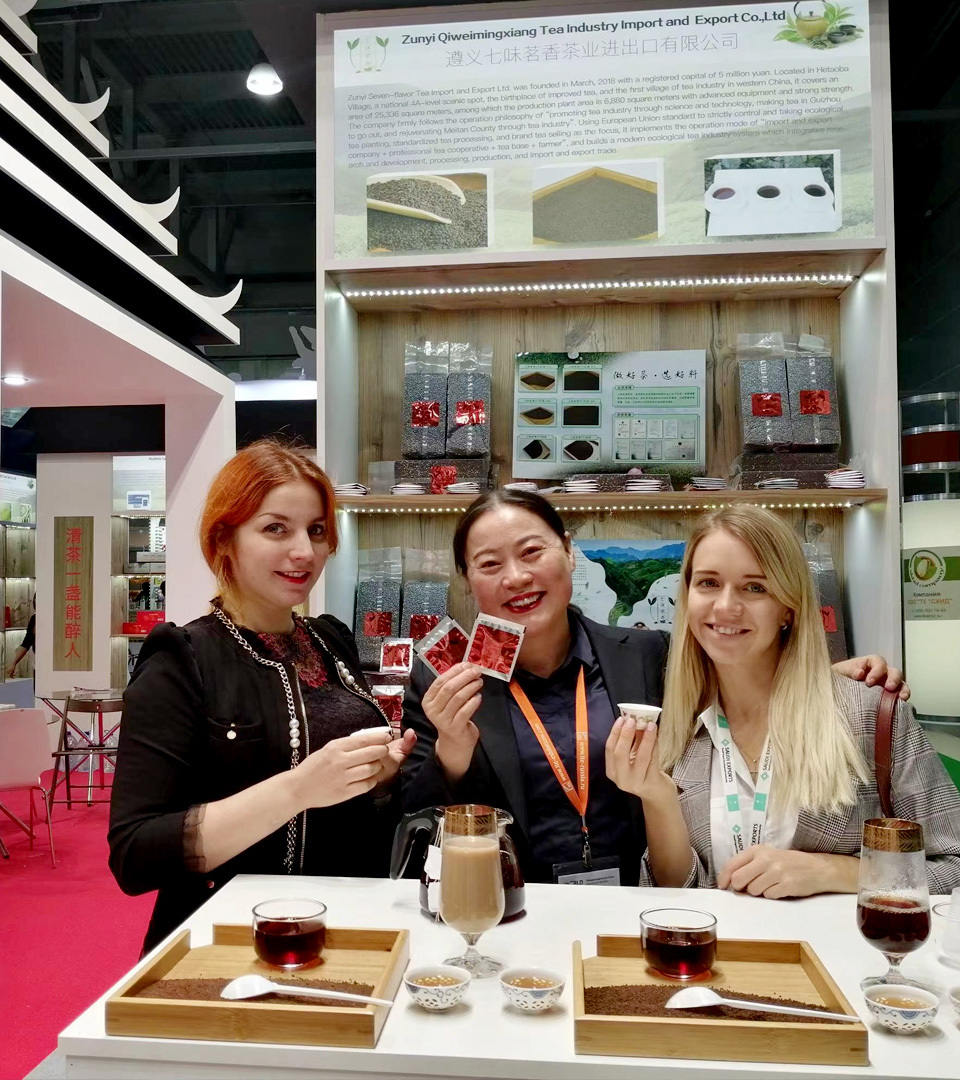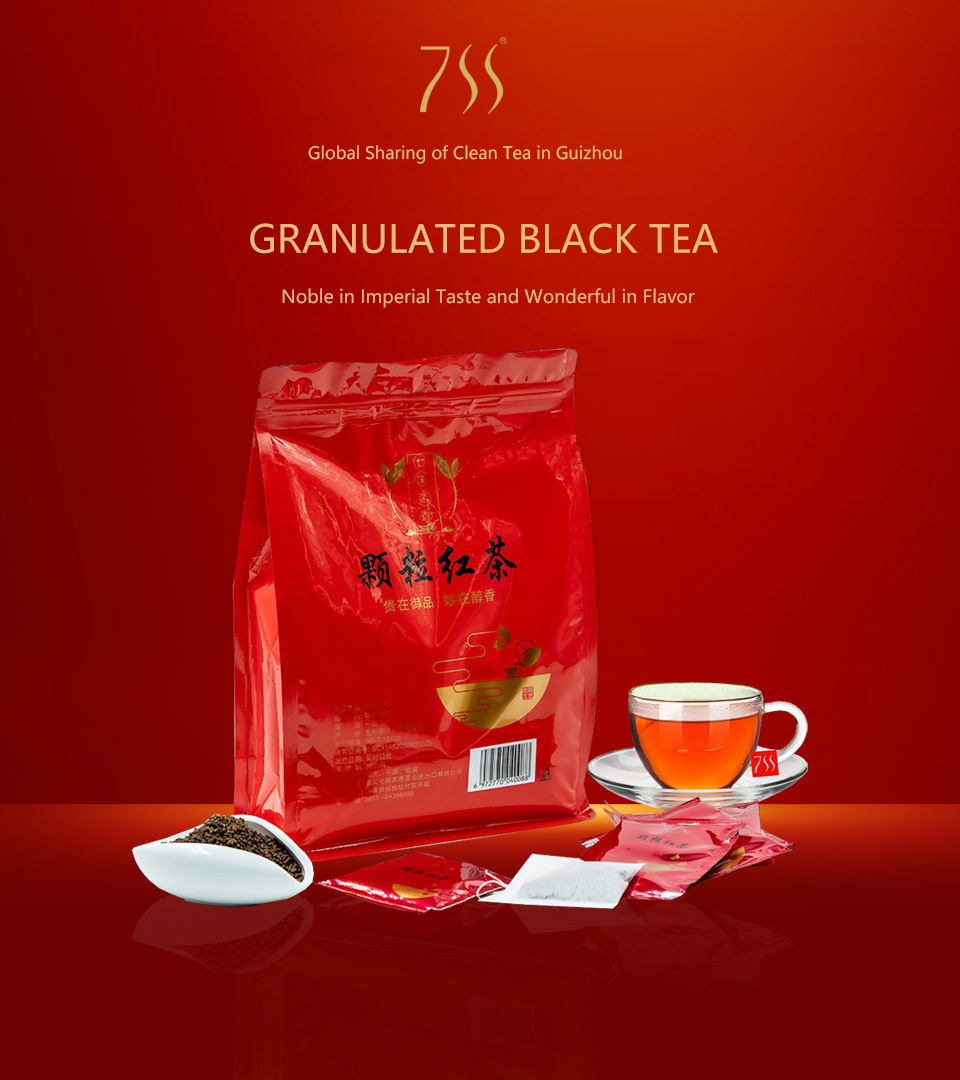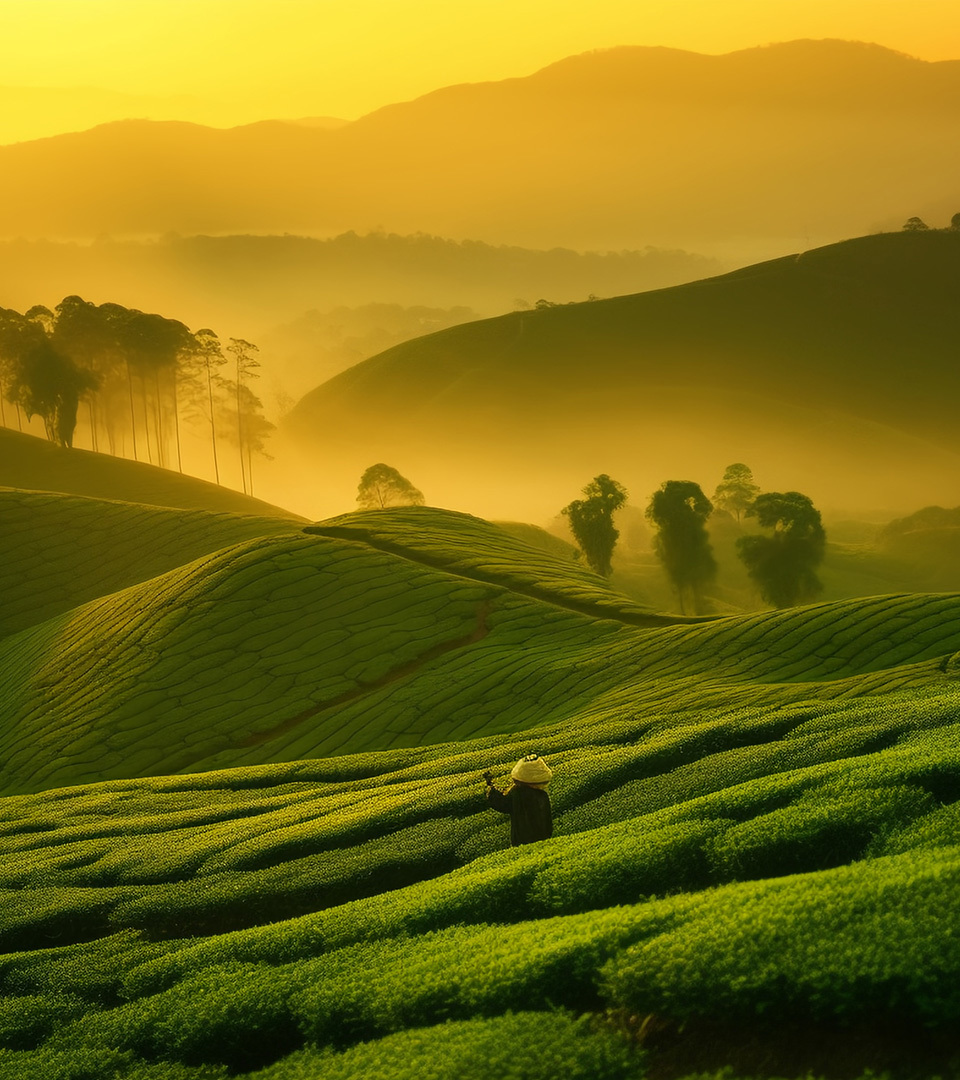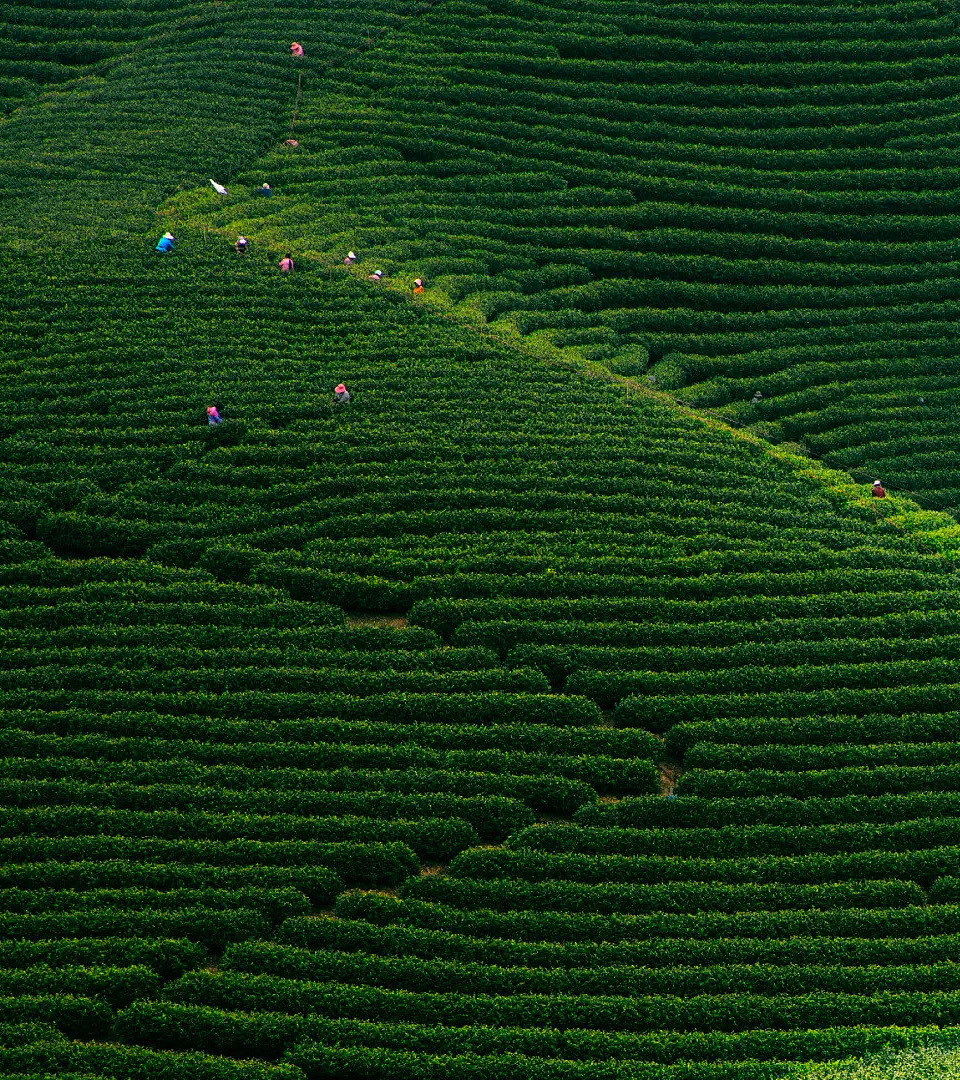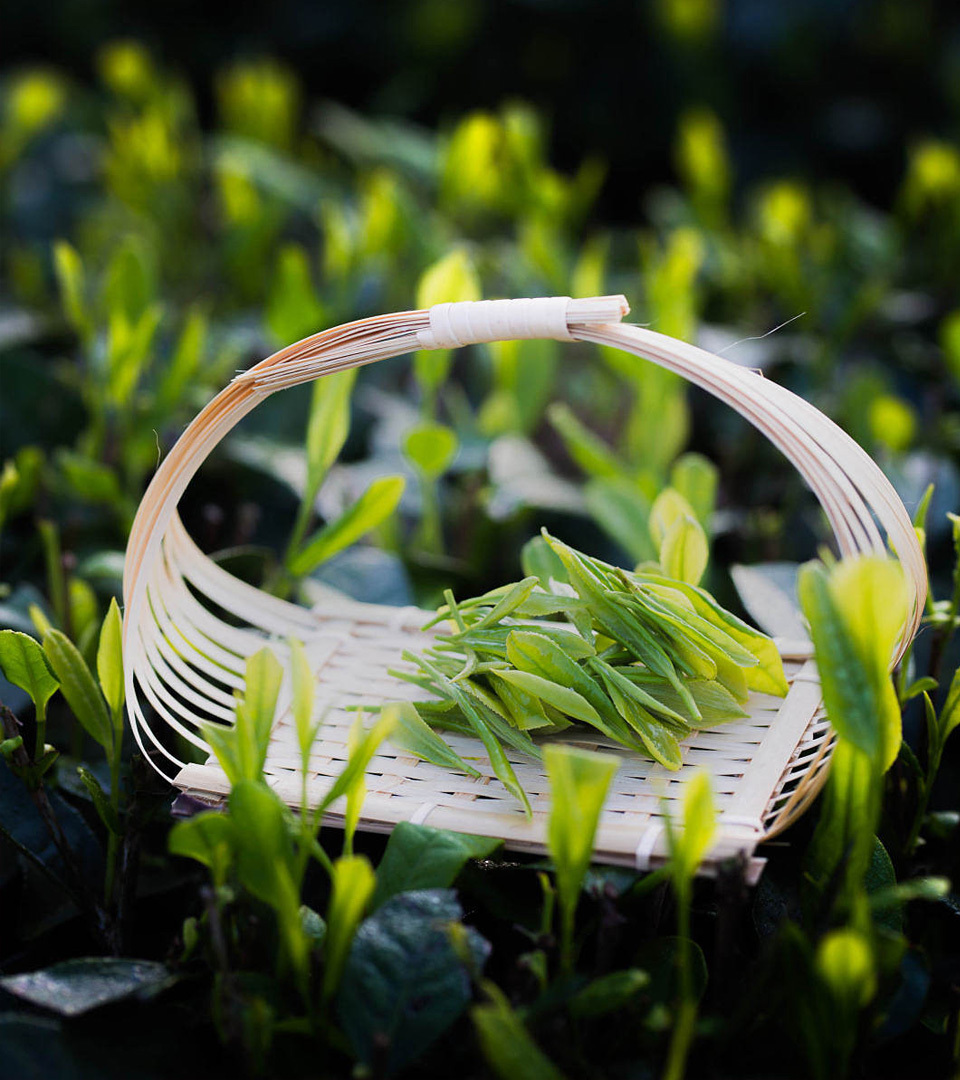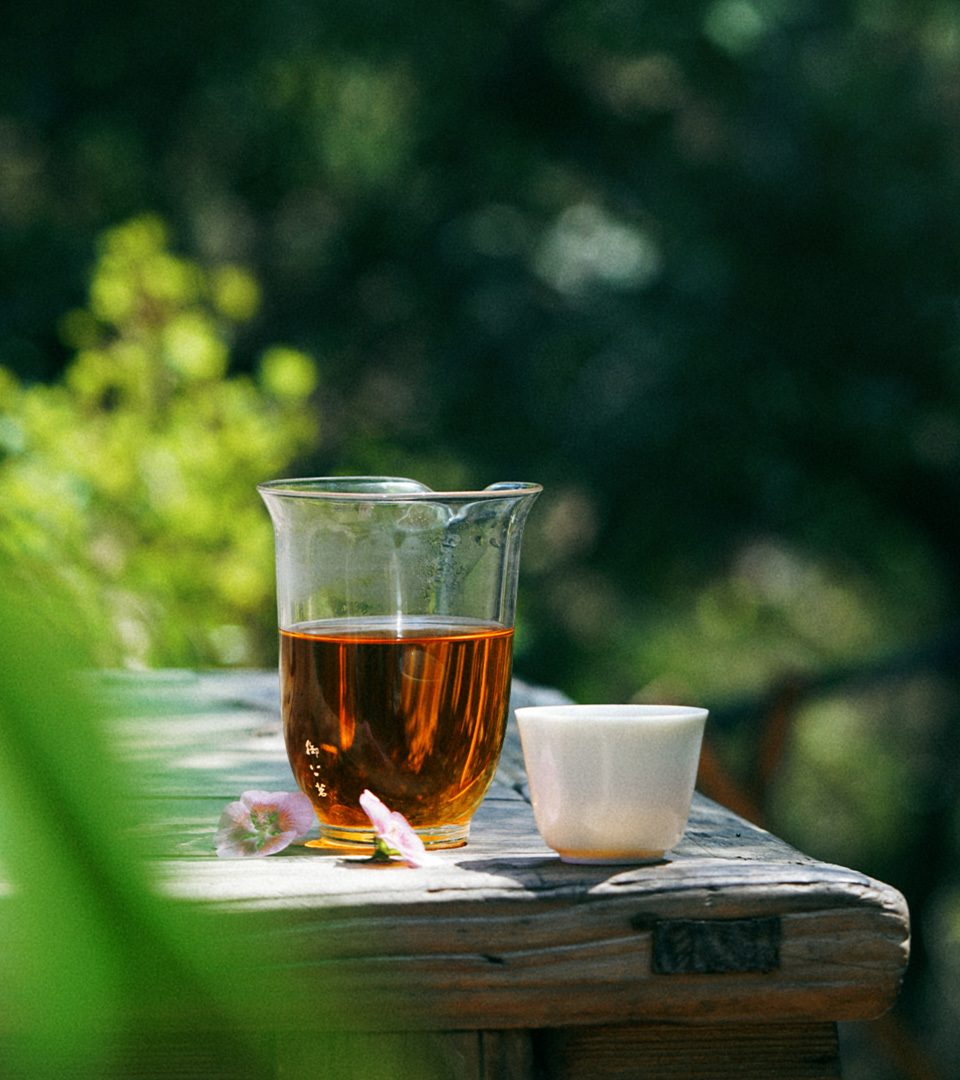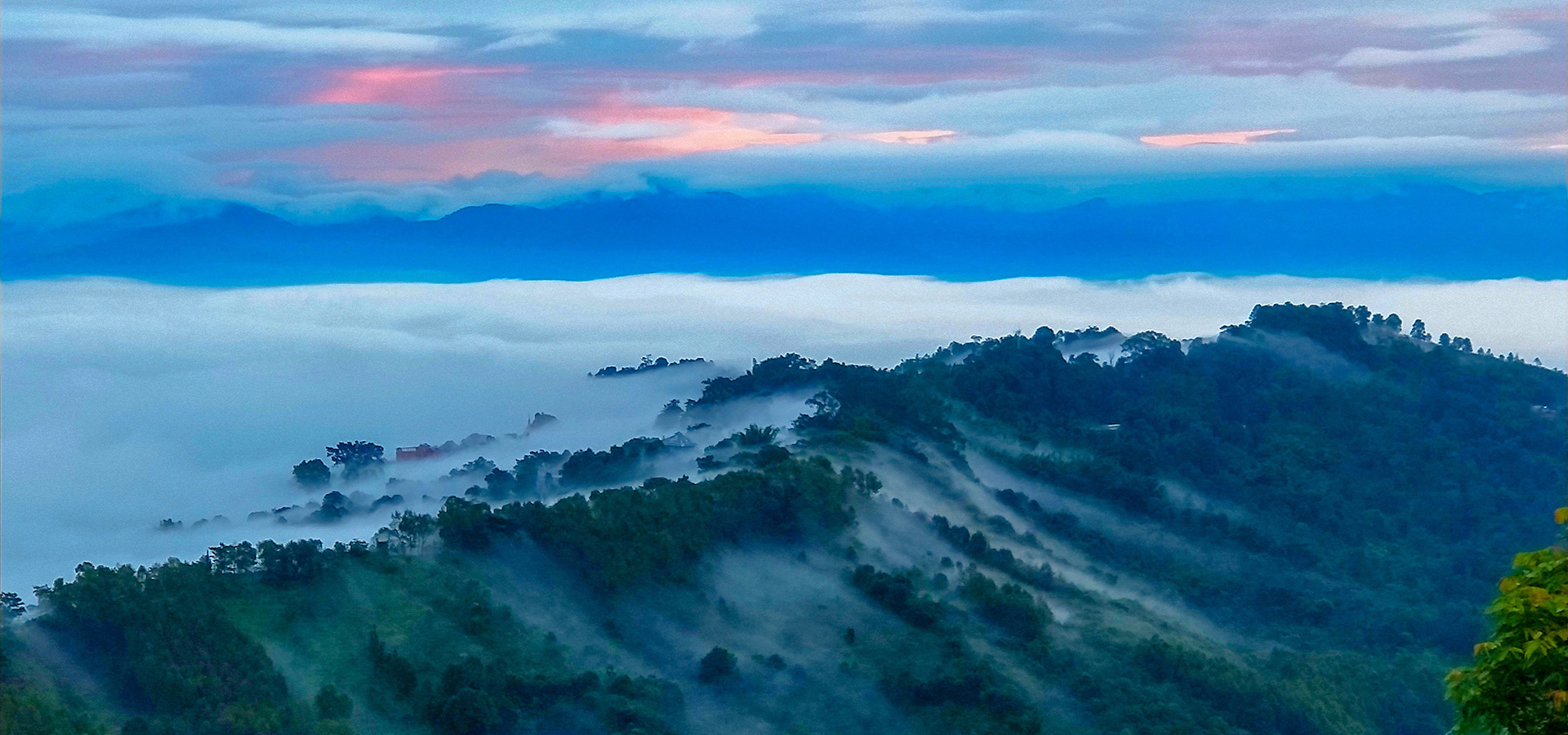Japanese Tea Ceremony
Japanese people have a particular fondness for tea. It is said that my research on Lu Yu's "Tea Classic" in China today is unparalleled by the Chinese people. Chinese Gongfu tea and Chinese tea art have taken root and sprouted in Japan, and have achieved development. Japanese tea art and ceremony uphold the essence of Chinese tea culture and integrate creativity through continuous understanding. Today, Japanese people mainly drink green tea, including a type of jade green tea. The tea powder is slightly green and has a faint feeling. Using ancient tea bowls, vertical elliptical tea cups, and other tea utensils to brew, the tea has a astringent and sweet taste, with a strong aroma of corn in it, as delicate as the feeling of being bathed in rain in the forest. The tea ceremony often uses old coarse porcelain bowls, with a sense of humility and self-respect. Japanese people enjoy tea together, emphasizing the elegance, tranquility, and peace of the tea room. Regardless of their status, they are considered as distinguished guests. All of this is reflected in the process of brewing and honoring tea, which is "mellow and light", and in the atmosphere of "humble and respectful". During the Tang and Song dynasties, tea drinking was already very popular in China and an extremely meticulous drinking process was formed. In the second year of the Shaoxi reign of the Southern Song Dynasty, Japanese monk Rongxi brought tea seeds back from China to Japan, where tea cultivation began. And formed its own unique tea culture - the tea ceremony.
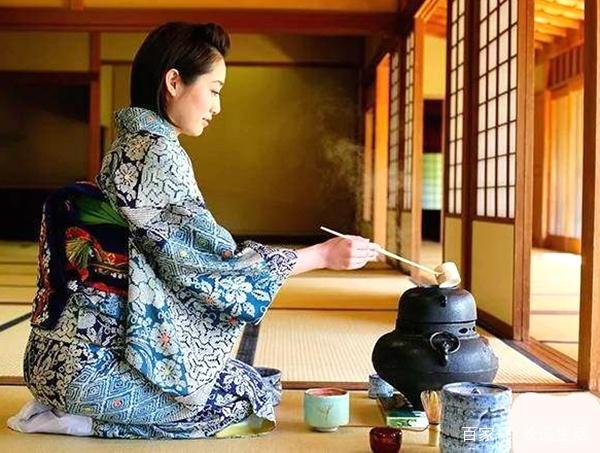
In Japan, one month before the start of tea picking, a shading net is used to cover the tea tree, allowing the amino acids in the tea to accumulate. Generally, steam sterilization is used to make tea, preserving the color and fresh taste of green tea. These green teas can be brewed directly or ground into powdered matcha. Matcha originated from ordering tea in the Song Dynasty. Take an appropriate amount of Matcha powder into the tea bowl, fill it with water, and then use a tool called Tea Taste to quickly stir it into foam (similar to beating eggs), and then sip it in small sips. It tastes delicate and sweet.
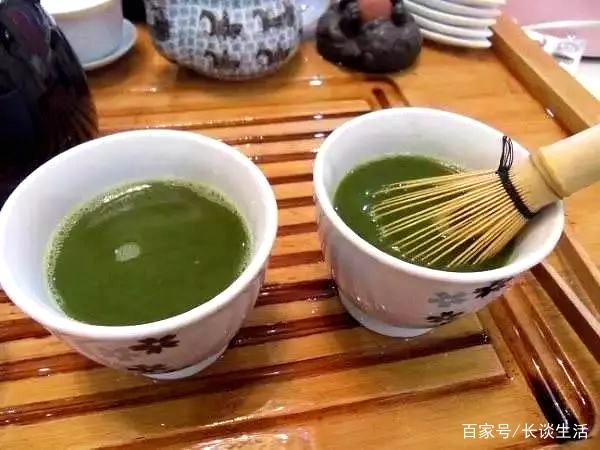
The Japanese tea ceremony is probably the most complex way to drink beverages. There are cumbersome procedures, tea leaves need to be finely ground, tea utensils need to be wiped clean, and the owner's movements need to be standardized, with both a dance like rhythm and a sense of elegance, while also being accurate and in place. Tea tasting is very particular about the venue, usually held in the tea room. When receiving guests, after the guests have taken their seats, the tea master in charge of the ceremony will light charcoal fire, boil water, brew tea or matchtea according to the prescribed actions, and then present them to the guests in sequence. The tea ceremony in Japan now integrates local Japanese philosophy, religion, cultural ethics, and aesthetic taste on the basis of Chinese tea culture, becoming a business card of Japan. The most exquisite tea: Japanese matcha.
India
There is a type of tea in India called "Samara tea", and the main feature of La tea is the mixing of various spices in the tea drink, also known as "Spice tea". When drinking tea, after mixing various ingredients, pour the tea soup back and forth between two containers to evenly mix the ingredients. This action not only has great benefits for the taste of the tea, but also plays a role in showcasing the guests' skills. It is very popular among the locals.
La Cha is popular in India and some Southeast Asian countries, representing their unique way of life. Indian tea is based on British milk tea (India was once a British colony), which is made by adding local spices such as cloves, ginger, and cinnamon to British milk tea (black tea with milk and sugar).
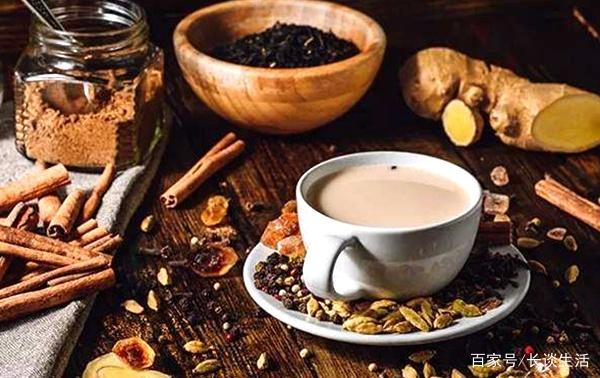
India and China share a similar passion for tea culture. In this' spice kingdom ', tea leaves and spices are mixed to bring refreshing drinks to tea drinkers, allowing each sip to taste a rich ethnic flavor. The most representative: India's "licking tea"
When they drink tea, they add milk, ginger, and small beans to the tea, making it unique in flavor. The way Indians drink tea is very unique. Pouring it onto a plate and sticking out their tongue to lick it can be said to be unique. The tea drinking custom in their country is generally that people in mountainous areas drink green tea, while people in hilly and plain areas drink more black tea. Just add ginger and cardamom to the tea.
The traditional way of drinking tea in India is also very unique. They first pour the tea into a plate and then lick it with their tongue. Do not use your left hand to deliver tea sets. In India, your left hand is used for bathing and toilet use.
Russia
In the 1730s, the Mongolian Khan gave some Chinese tea to the Russian Tsar, who was very fond of it. Tea was introduced to the Russian court and became popular among nobles. Forty years later, a large number of Moscow merchants began importing Chinese tea.
Russians often use a tea set called "teapot", also known as a tea soup pot, when drinking tea. Copper and silver are mostly used, divided into inner and outer layers, heated in the middle and boiled with water around. It's very similar to the charcoal pot we use to rinse lamb. However, there are faucets and legs on the tea cooker, making it convenient to pour tea.

Nowadays, in Russia, whether it's having three meals a day, visiting family and friends, or even picnics in the suburbs, one can see the figure of drinking tea with a teapot. Already integrated into daily life. The most representative: Russian jam tea.
Russians like to first brew a thick pot of black tea in a teapot, pour a little into a teacup when drinking, and then pour boiling water to adjust to different flavors according to their own habits. They also add jam or honey to the tea to make sauce tea and drink it off the cuff.
Britain
In the 17th century, the Zhengshan small black tea in Mount Wuyi, China, was brought to Europe by Portuguese merchants. In 1660, Princess Catherine of Portugal married the British royal family. In her dowry, there were black tea and sugar. Later, Princess Catherine used black tea to entertain guests in the palace, which gradually became a fashion.
In 1840, the seventh Duchess of Bedford, Anna Maria Russell, instructed her servants to prepare a tea plate filled with bread, butter, and cake at 4 pm every day to pass the hunger time between lunch and dinner. She also invited some best friends to join in, and everyone followed suit after returning, thus forming the popular afternoon tea among the British aristocracy.

Britain is a country of gentlemen, and the British people are also very particular about drinking tea. According to formal terms, at least 4 servings of tea should be consumed a day, including "bed tea" consumed on an empty stomach when waking up in the morning; Drink 'morning tea' once at 11am; Drink 'afternoon tea' once after lunch; Drink 'late tea' again after dinner.
Authentic afternoon tea has three characteristics: first, a comfortable and elegant environment, second, a variety of tea snacks, and third, exquisite and high-end tea sets. British people like black tea best paired with porcelain or silver tea sets, placed on tea tables with exquisite tablecloths, and launched various exquisite tea snacks with small carts to enjoy a pleasant afternoon. The most fancy tea: British "mixed tea"
Tea has almost become one of the favorite beverages of the British people. The brewing method of the British is also different from that of our Chinese people. They soak tea leaves in hot water in bags, and only soak them once in a small bag. When drinking at home, a filter cup is also installed in the teapot where the tea is made to filter the broken tea powder, and oranges, roses, and sometimes a piece of sugar or a little milk are added to the tea soup. It is said that by adding these substances to tea, the amount of theophylline that is prone to stomach damage is reduced, and the health benefits of tea can be enhanced.
America
About half of the people in the United States drink tea, which is amazing. Americans drink tea the same way they drink instant coffee, emphasizing convenience and speed. They do not like the complex process of brewing tea and do not like any traces of tea leaves appearing in tea cups. According to reports, tea sales in the United States exceed $1 billion annually, and there are over a hundred types of Chinese bird dragon tea, green tea, and others available in the US market, but most of them are canned cold drinks. In the United States, tea is generally consumed with European flavor, not Chinese style. Most people drink iced tea instead of hot tea. When drinking, ice cubes should be placed in the cold tea, or the cold tea should be frozen in the refrigerator beforehand. Then, the cold aroma of the cold tea can be smelled, and the cold teeth can be refreshing when sipping. When you drink it, you suddenly feel a refreshing and wonderful feeling in your chest. Unfortunately, due to the preference for drinking and cooling, this tea does not have the same taste, warmth, and tenderness that Chinese tea produces. Therefore, the taste of drinking tea is greatly discounted.
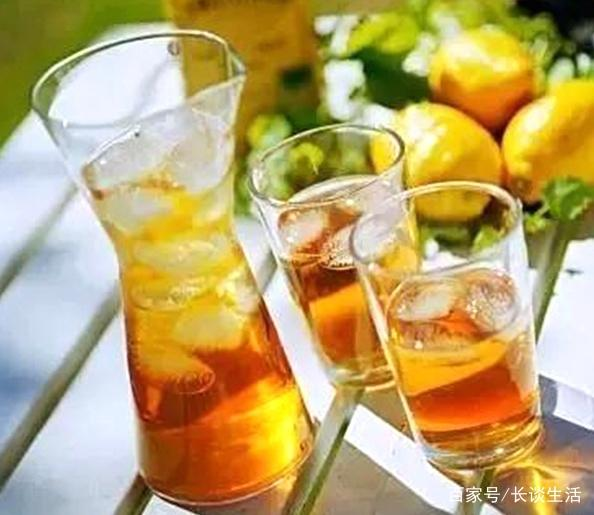
Except for cola, the national beverage in the United States is nothing but ice tea. Rinse the black tea and let it cool. Add lemon juice and sugar according to your taste to make a lemon ice tea with a stronger sour taste, or add a little sugar. Mixing iced tea with soda water is also a good choice. Anyway, drink whatever you want.
Germany
Germans also enjoy drinking tea, some of which are both funny and cute. For example, Germany also produces scented tea, but it is not tea that has been smoked with jasmine, magnolia, or Milan in our country. Their so-called "flower tea" is made by adding various petals and dried fruits such as apples and hawthorn, and there is not a single piece of tea inside, truly "there are flowers but no tea". Chinese floral tea, emphasizing the distant fragrance of flower flavor; German floral tea, seeking the authenticity of petals. German flower tea must be sweetened, otherwise it will have a astringent and sour taste due to its strong floral aroma.
Germans also buy Chinese tea, but when drinking tea at home, they use boiling water to continuously pour the tea leaves placed on a fine metal filter sieve. The poured tea flows into the teapot through a funnel installed under the sieve, and then the tea leaves are poured out. The characteristic of this method of brewing tea is that the taste is relatively light and the color is relatively light.
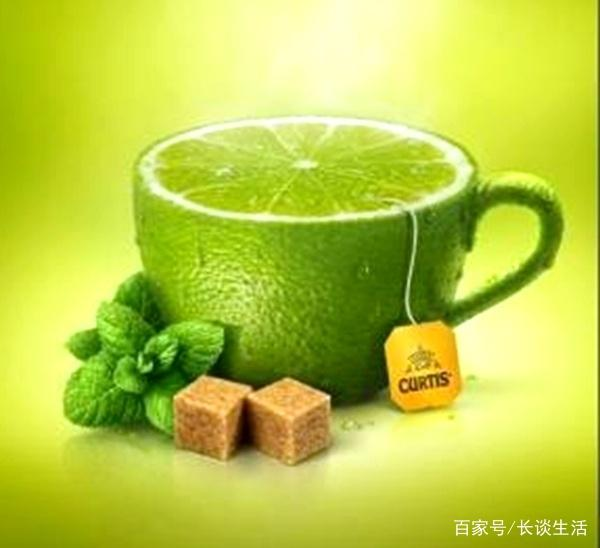
Malaysia
Meat and bone tea refers to drinking tea while eating meat and bone. Meat and bone, choose fresh pork ribs with lean meat, and cook with seasoning before simmering. We will also add valuable nourishing herbs such as Codonopsis pilosula, goji berries, and cooked glutinous rice to make the meat and bones more fragrant, delicious, and nutritious.
And most of the tea is selected from oolong tea produced in Fujian, such as Dahongpao and Tieguanyin. Nowadays, meat and bone tea has become a popular food. When eating meat and bone tea, there is an unwritten rule that people must drink tea when eating meat and bone.
Thailand's "pickled tea"
In the northern region of Thailand, there is a custom of eating pickled tea, which is similar to the method of making pickled tea from ethnic minorities in Yunnan, China. It is usually pickled during the rainy season. Pickled tea is actually more like a delicacy. When eating it, mix it with spices and chew it carefully in your mouth. Due to the hot climate, humid air, and fragrant and cool pickled vegetables here, pickled tea has become a household dish passed down from generation to generation. At the same time, the temperature in Thailand is relatively high, so Thai people prefer to drink iced tea and like to add some ice cubes to hot tea, making it feel cool and comfortable to drink.
Morocco
Hot Africans tend to prefer small freshness, such as Morocco's signature tea, which mixes fresh green tea with a refreshing aftertaste of mint and spearmint.
Turkey
Perhaps because Türkiye coffee is so famous, Türkiye tea is relatively small, but for local people, they still drink a cup of black tea with sugar and no milk every day. Turkish people are hospitable and will invite guests to drink tea when they come. The most famous tea is apple tea. The enthusiastic host will prepare a cup of Türkiye tea, Türkiye coffee or apple tea for the guests. Many first time visitors to Türkiye will feel that Türkiye tea tastes bitter and Türkiye coffee is too strong to melt, which is not so pleasant. But Türkiye apple tea is easy to make people fall in love with it after drinking it. The thick apple fragrance and tea fragrance blend together, making people feel comfortable to drink. The double hearth furnace is an essential tool for making Türkiye tea.
South Africa
Strictly speaking, what South Africans often drink is a red shrub plant, and the tea soup brewed presents a charming red color. The taste has a refreshing natural floral and fruity aroma, making it perfect for a glass of sleep before bedtime.
North Africa
Sudanese people located in North Africa drink tea and like to have a few fresh mint leaves and some rock sugar in green tea, which is refreshing and delicious when drinking. When a guest comes to visit, it is considered polite for them to finish the three cups of tea that the host has offered them.
Argentina
Vanilla tea is a iconic green tea in South America that blends many vitamin elements, and is often seen in Portugal, Lebanon, and Syria. It has the aroma of tobacco and is suitable for both hot and cold.
Pakistan
Who said spice tea is only available in India. Spicy and creamy scented spiced tea is also the perfect afternoon tea in Pakistan, and sometimes British breakfast black tea can be used as the base for this tea drink.
Kuwait
Traditional Kuwaiti tea is a blend of cinnamon and saffron, a slightly spicy beverage that is very refreshing and refreshing.
Inner Mongolia:
The dietary habits of Mongolians are mainly based on meat, but eating only meat can be too greasy, so Mongolians drink tea almost every meal. The Mongolian people drink brick tea, which is different from the tea we usually drink. Brick tea, as the name suggests, is a block like tea that looks like bricks. To drink it, cut a small piece into a pot and add water to boil it. Salt, milk, goat's milk, and cream are also added to make it milk tea. This type of tea cannot be brewed with simple boiling water.

